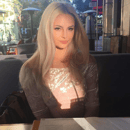As seen on the new season of American Horror Story, “Cult,” trypophobia is quite horrifying. To put it simply, trypophobia is a fear and/ or disgust of closely packed holes or shapes that resemble clusters of holes. I know, it seems strange and almost unbelievable. But it’s true: I have it!
I’ve had this phobia for a long time, but I will share with you a specific experience I will always remember.
About a year ago while driving on the freeway, I was coming up to a small truck with an open back. This truck had building materials and tools in it. As I got closer, I saw plastic poles stacked up in the back of this truck. I began to feel an intense nausea, as the ends of these poles formed a cluster of holes. I felt very anxious and disturbed, as well. I almost threw up while driving, and even now while typing this I am feeling nauseous.
Triggers exist everywhere. This phobia could be triggered by bubbles. It could be triggered by a honeycomb, or coral, or even the skin of a spotted animal. There are so many things that can cause a person with trypophobia to feel its symptoms.
Symptoms include goosebumps, feeling repulsed, feeling uncomfortable or on edge, eye strain, sight distortion, illusions, distress, feeling your skin crawl, panic attacks, sweating, nausea and body shakes.
A study published in April of 2017 suggests, contradicting previous thoughts that trypophobia comes from associating these objects or clusters with harmful creatures, that this phobia is simply caused by the appearance of these animals. This was found after surveying preschoolers. This study proves that trypophobia does not come from an association the brain makes with dangerous animals, but rather the actual appearance of certain objects.
The American Psychiatric Association does not recognize trypophobia as an official phobia, because there is still so much that is unknown about it.
It has been shown that people with trypophobia are more likely to experience major depressive disorder and generalized anxiety disorder, so if you do live with trypophobia please know that these are possibilities for you.
Therapy is a legitimate treatment for this phobia. It is also suggested that you get enough rest, eat a healthy and balanced diet, avoid caffeine, reach out to friends, family or a support group facing the same issues and to face these feared situations head on as often as possible.
If you have this phobia, please take care of yourself and follow the guidelines listed above. But first, test yourself to see if you have it!
Check out this video of others with trypophobia looking at objects with holes! “https://www.youtube.com/watch?v=tN26iIIXKj0“


